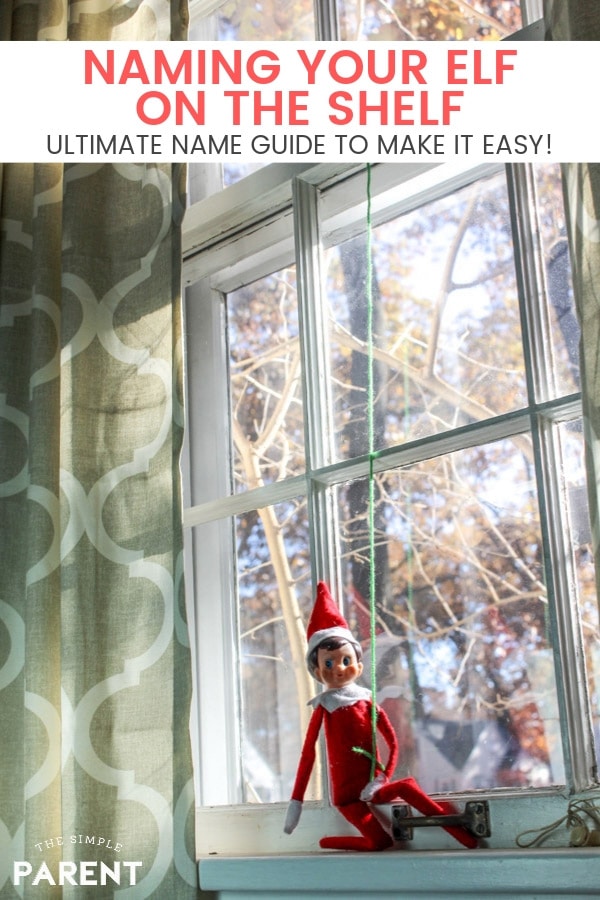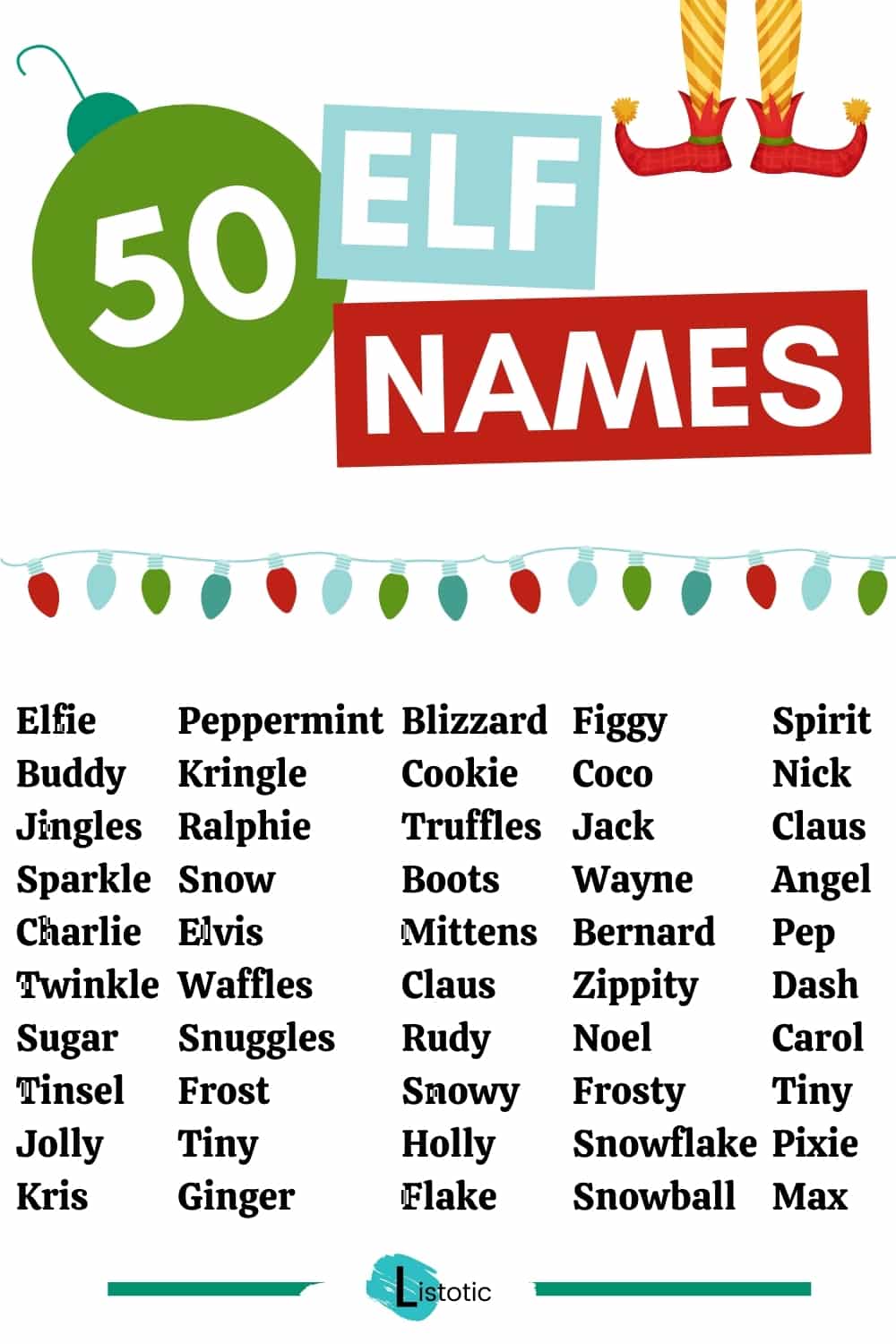A Comprehensive Guide to Christmas Elf Names: Exploring the Magic Behind the Monikers
Related Articles: A Comprehensive Guide to Christmas Elf Names: Exploring the Magic Behind the Monikers
Introduction
With enthusiasm, let’s navigate through the intriguing topic related to A Comprehensive Guide to Christmas Elf Names: Exploring the Magic Behind the Monikers. Let’s weave interesting information and offer fresh perspectives to the readers.
Table of Content
A Comprehensive Guide to Christmas Elf Names: Exploring the Magic Behind the Monikers

Christmas elves, those whimsical and industrious beings who work tirelessly in Santa’s workshop, are more than just helpers. They are individuals with distinct personalities, roles, and of course, names. These names, often whimsical and reflecting their unique traits, contribute significantly to the rich tapestry of Christmas lore. This article delves into the world of Christmas elf names, exploring their origins, significance, and the impact they have on the festive narrative.
The Origins and Evolution of Christmas Elf Names
The tradition of naming Christmas elves dates back centuries, evolving alongside the broader mythology surrounding Santa Claus. Initially, these names were often simple and descriptive, reflecting the elf’s role or physical characteristics. Names like "Jingle" or "Sparkle" were common, evoking the sounds and sights of the workshop.
Over time, the names became more elaborate, incorporating elements of folklore and fantasy. This shift was likely influenced by the growing popularity of children’s literature, which often featured detailed descriptions of elf characters. Authors like Clement C. Moore, in his iconic poem "A Visit from St. Nicholas," helped establish a foundation for elf names that resonated with readers and listeners.
The Significance of Christmas Elf Names
The names given to Christmas elves serve several important purposes:
-
Individuality and Personality: Each name helps to differentiate the elves and give them distinct identities. A name like "Twinkle" suggests a mischievous and playful personality, while "Peppermint" might indicate a more serious and organized elf.
-
Storytelling and Imagination: Elf names contribute to the rich storytelling tradition of Christmas. They help to create a sense of wonder and magic, inviting children and adults alike to engage with the festive narrative.
-
Cultural Connection: Christmas elf names are often rooted in cultural traditions and folklore. Names like "Jingle" and "Sparkle" draw on the imagery of Christmas carols and decorations, creating a strong sense of familiarity and nostalgia.
Exploring the Diversity of Christmas Elf Names
Christmas elf names are a diverse and fascinating collection, reflecting a range of influences:
-
Nature-Inspired Names: Many names draw inspiration from the natural world, reflecting the elves’ connection to the environment. Examples include "Willow," "Blossom," and "Sparrow."
-
Food and Drink-Themed Names: Names like "Candy," "Ginger," and "Peppermint" evoke the sweet and savory treats associated with Christmas.
-
Descriptive Names: Names like "Tinker," "Stitch," and "Hammer" reflect the elf’s specific skills and roles within the workshop.
-
Creative and Whimsical Names: Names like "Starlight," "Moonbeam," and "Dreamcatcher" capture the magical and imaginative qualities of Christmas elves.
The Impact of Christmas Elf Names on the Festive Narrative
Christmas elf names play a vital role in shaping the festive narrative:
-
Creating a Sense of Community: The unique names of the elves help to create a sense of community within Santa’s workshop, fostering a feeling of camaraderie and belonging.
-
Enhancing the Festive Atmosphere: Elf names contribute to the overall festive atmosphere, adding a touch of whimsy and magic to the Christmas season.
-
Connecting with Children’s Imagination: Elf names spark children’s imaginations, encouraging them to engage with the world of Santa and his helpers.
FAQs about Christmas Elf Names
Q: Are there any guidelines for creating Christmas elf names?
A: While there are no strict guidelines, the most effective elf names are usually short, memorable, and evocative of the elf’s personality or role.
Q: How can I use Christmas elf names in my own Christmas celebrations?
A: You can incorporate elf names into your decorations, gift tags, or even create a family tradition of giving each other elf names for the holiday season.
Q: Are there any specific Christmas elf names that are particularly popular?
A: Some popular names include "Jingle," "Sparkle," "Candy," "Peppermint," and "Tinker."
Tips for Choosing Christmas Elf Names
-
Consider the Elf’s Personality: Choose a name that reflects the elf’s character and role in the workshop.
-
Think about the Elf’s Skills: A name like "Stitch" might be appropriate for an elf who specializes in sewing toys.
-
Keep it Simple and Memorable: Short and catchy names are easier to remember and will make a lasting impression.
-
Have Fun with It: The most important thing is to choose a name that you enjoy and that adds to the magic of the Christmas season.
Conclusion
Christmas elf names are more than just whimsical monikers; they are integral parts of the festive narrative, adding depth, personality, and a touch of magic to the Christmas season. From the traditional names that have stood the test of time to the more modern and creative names that continue to emerge, these names serve as a reminder of the enduring power of imagination and the joy of celebrating the holiday season. By understanding the origins, significance, and diversity of Christmas elf names, we can appreciate their contribution to the rich tapestry of Christmas lore and continue to create new traditions and stories for generations to come.








Closure
Thus, we hope this article has provided valuable insights into A Comprehensive Guide to Christmas Elf Names: Exploring the Magic Behind the Monikers. We hope you find this article informative and beneficial. See you in our next article!